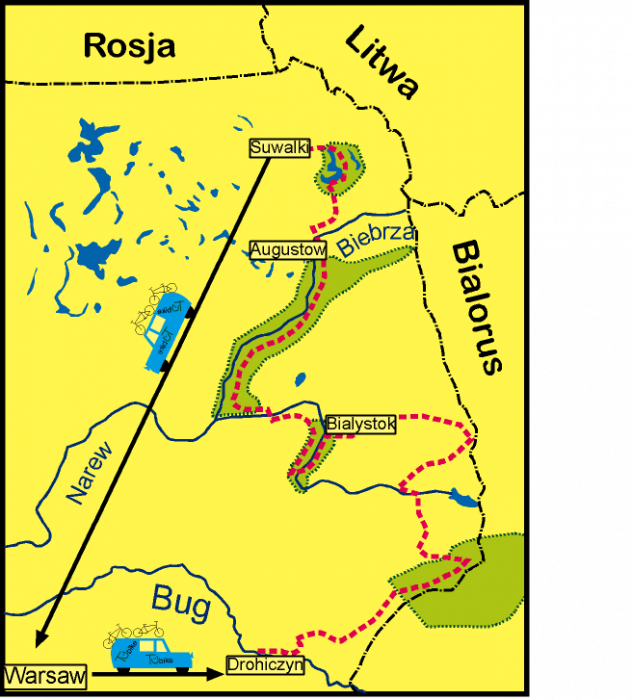“In the land of wisents and elks – among the wildest Polish rivers”
In Ten days about 440km (by bike, kayak, ship, narrow-gauge railway)
Podlasie region is one of the most beautiful regions in Poland, especially with amazing and wild nature. It is the area of the greatest wilderness and still true wild forest. It is the habitat of the biggest European animals such as elks, deer, wolves and the wisent (a European bison) – the king of the wilderness. Podlasie has been a melting pot for centuries where the Poles, Belorussians, Lithuanians and the Jews as well as Tatars mixed. When travelling, we will discover the breathtaking spots, monuments of three different religions and of course an untouched nature. Moreover, we will meet the authentic inhabitants of the region.
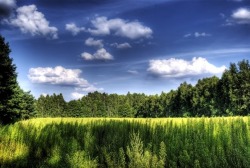
Day 1 - 0KM
Individual arrival to Warsaw. Check in at the hotel past 12.00.
A welcome drink – the meeting of all the participants at 3pm.
A walk round the Warsaw and an evening dinner for the travellers – a great chance to meet the other participants.
Individual arrival to Warsaw. Check in at the hotel past 12.00.
A welcome drink – the meeting of all the participants at 3pm.
A walk round the Warsaw and an evening dinner for the travellers – a great chance to meet the other participants.
Day 2 - 50km
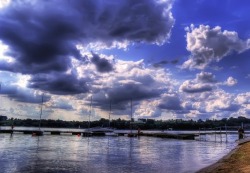
A coach transfer from Warsaw to Drohiczyn (about 100 km). That is where we get on our bikes for the first time and cycle round the city, starting our bicycle adventure.
In the past Drohiczyn was the capital of Podlasie and even a place of coronations of the Haliccy Princes. Today it is not a big town with well preserved historical monuments. You can see a beautiful view of the river Bug from the top of a castle mountain and the ruins of the castle. There are also Soviet fortifications built during the Second World War because there used to be a border between Germany and Soviet Union. We cycle east along the river Bug towards the most sacred for the Protestants sanctuary in Poland – Grabarka, visiting a charming town of Siemiatyczne on our way.
The origins of Grabarka are connected with a legend about a miraculous survival of the local people in the times of a plague. There is a wooden Orthodox church at the top of a sacred hill surrounded by the forest of wooden crosses. The crosses were brought there by the Orthodox pilgrims from all over the world. A sacred spring in a wonderful chapel is also located at the top of a hill.
We have our first dinner break in a charming local restaurant near Grabarka where we taste delicious regional dishes.
Later on we cycle towards Białowieża Forest, travelling closer and closer to Belorussian border. In Białowieża Forest we spend our first night. An evening campfire under the starry sky is a great opportunity to get to know each other.
In the past Drohiczyn was the capital of Podlasie and even a place of coronations of the Haliccy Princes. Today it is not a big town with well preserved historical monuments. You can see a beautiful view of the river Bug from the top of a castle mountain and the ruins of the castle. There are also Soviet fortifications built during the Second World War because there used to be a border between Germany and Soviet Union. We cycle east along the river Bug towards the most sacred for the Protestants sanctuary in Poland – Grabarka, visiting a charming town of Siemiatyczne on our way.
The origins of Grabarka are connected with a legend about a miraculous survival of the local people in the times of a plague. There is a wooden Orthodox church at the top of a sacred hill surrounded by the forest of wooden crosses. The crosses were brought there by the Orthodox pilgrims from all over the world. A sacred spring in a wonderful chapel is also located at the top of a hill.
We have our first dinner break in a charming local restaurant near Grabarka where we taste delicious regional dishes.
Later on we cycle towards Białowieża Forest, travelling closer and closer to Belorussian border. In Białowieża Forest we spend our first night. An evening campfire under the starry sky is a great opportunity to get to know each other.
Day 3 - 65km
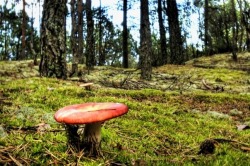
That day we head to the heart of the forest. After a few hours of cycling through the forest areas we get to Białowieża. On our way we take a break for a picnic in a beautiful scenery of the forest. We leave our bikes there and travel on foot to meet the king of the forest – the wisent.
Białowieża was a favourite and popular place for hunting by Polish kings, Russian tsars and less glorious figures of Henrich Himmler and Herman Goering. A glorious palace of tsar Alexander and a wonderful wooden Orthodox church have survived in the town.
Białowieża was a favourite and popular place for hunting by Polish kings, Russian tsars and less glorious figures of Henrich Himmler and Herman Goering. A glorious palace of tsar Alexander and a wonderful wooden Orthodox church have survived in the town.
Day 4 - 70km BIKE
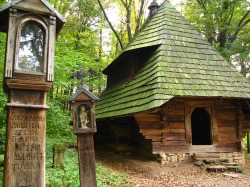
As we travel by bike on a charming forest track, we get to Hajnówka. Apart from sightseeing the most beautiful Orthodox churches, we travel in time – finding ourselves in the times of Lenin and Marks. A visit in the pub that seems to be an ordinary one changes into a feast with the socialist leaders and dancing to the beat of the propaganda songs. Anyone willing to join in and take part in ‘the international’ can dress up as a Soviet officer in a Soviet uniform.
After the visit in the socialist times we travel north through the wilderness by narrow-gauge railway prepared specially for us. The wind blowing our hair gives us a relief from what we have experienced that Bar at Włodzia’s.
Another small Town on our way is Narew and its churches of two religions and a trail that begins there – ‘The Land of the Open Shutters’. The land consists of three small villages that appear to have existed in different times with old cottages, Orthodox churches and outbuildings amazingly decorated with woodcarving elements, and all of that organized in an old town layout.
In the afternoon we get to the area inhabited by Tatars where we spend our next night.
After the visit in the socialist times we travel north through the wilderness by narrow-gauge railway prepared specially for us. The wind blowing our hair gives us a relief from what we have experienced that Bar at Włodzia’s.
Another small Town on our way is Narew and its churches of two religions and a trail that begins there – ‘The Land of the Open Shutters’. The land consists of three small villages that appear to have existed in different times with old cottages, Orthodox churches and outbuildings amazingly decorated with woodcarving elements, and all of that organized in an old town layout.
In the afternoon we get to the area inhabited by Tatars where we spend our next night.
Day 5 - 70km BIKE
Travelling through Tatar’s borderland, visiting the relicts of the past and admiring the untouched nature, we get to the capital of that region – Białystok – in the afternoon. On our way we sightsee the enchanting towns of Kruszyniany, Krynki and Supraśl.
Białystok, a city with a rich and tumultuous history that has been the capital of the region for centuries, is today one of the fastest growing towns. We spend the night in Białystok and discover the beauty of the old town during an evening walk.
Białystok, a city with a rich and tumultuous history that has been the capital of the region for centuries, is today one of the fastest growing towns. We spend the night in Białystok and discover the beauty of the old town during an evening walk.
Day 6 - 15km BIKE 15 km CANOE
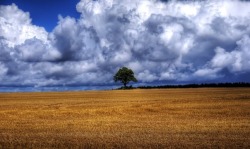
For a change and some rest, after a twenty-kilometer long journey by bike, we swap our aluminum vehicles for kayaks and travel during the rest of the day on a most beautiful Polish river – Narew. During a relaxing canoeing amongst the virgin nature, we have an opportunity to look closer at the natural forests and wild animals on the river bank. You can often catch a glimpse of a boar, a roe deer, a deer and if lucky – even an elk or a wolf.
After the whole-day canoeing we are invited to spend the night in a traditional farm tourism household.
After the whole-day canoeing we are invited to spend the night in a traditional farm tourism household.
Day 7 - 65km BIKE
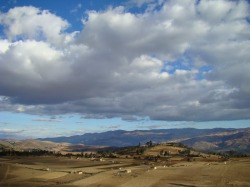
After breakfast we continue our trip through Narew National Park and arrive at traditional villages by the river - Kurowa, Śliwna and Waniewa – places of the world famous dill pickles. The cucumber strengthens our vigour and we head towards Tykocin cycling on forest paths. Tykocin’s past inhabitants left the synagogue which is to be visited by our group. When leaving the town, we enter the areas of another national park – Biebrza National Park - the largest one in Poland. Just before we plunge into Biebrza forest, we step by to a Eurpean Capital of the Stork and old Polish manor house in Kiermusy with a surprise for us. Cycling through the wild forests, we get to the centre of the wilderness where we spend the night. The region of Biebrza covers the biggest in Europe untouched boggy area full of wild animals.
Day 8 - 60km BIKE
After a morning walk near the nature reserve that protects the most fragile elements of the natural bog, we set off for the old tsar fortress, Osowiec. It was built on an inaccessible pass defending the roads to Russia and it is one of the best preserved fortifications in this part of Europe. We sightsee the fortress with an assist of an army after we obtain the permission to do it as the building is still a part of a military area.
Following the forest trails and tracks we get to one of the most beautiful cities in the region – Augustów – and we spend the night nearby in order to regain the strength for the next day of our trip.
Following the forest trails and tracks we get to one of the most beautiful cities in the region – Augustów – and we spend the night nearby in order to regain the strength for the next day of our trip.
Day 9 - 45km BIKE
We begin the day with a walk round the old town and next we go to a harbour where we board the ship and travel by Augustów Canal called the wonder of modern technology. The different levels of water in particular lakes that are joined by the canal are eliminated by the sluices which are used by numerous water vehicles: from kayaks to ships. After a two-hour long cruise we arrive to a marvellous peninsula and after a picnic by the lake shore we cycle through Augustów Primeval Forest towards Wigry Lake. In order not to get too exhausted during the last day of our trip we travel by a narrow-gauge railway and we also get the chance to taste regional delicacies. The peninsula, which gets far into the lake, hides a wonderfully situated Kameduli monastery and later on travelling by the lake shore we discover the last city on our tour – Suwałki. The last dinner is the time to exchange the phone numbers and e-mail addresses. Who knows - maybe we will meet here next year.
Day 10 – 0KM
We say goodbye after breakfast and some of us go back to Warsaw, some to Gdańsk and some stay at the wonderful Suwałki region for a longer time.
